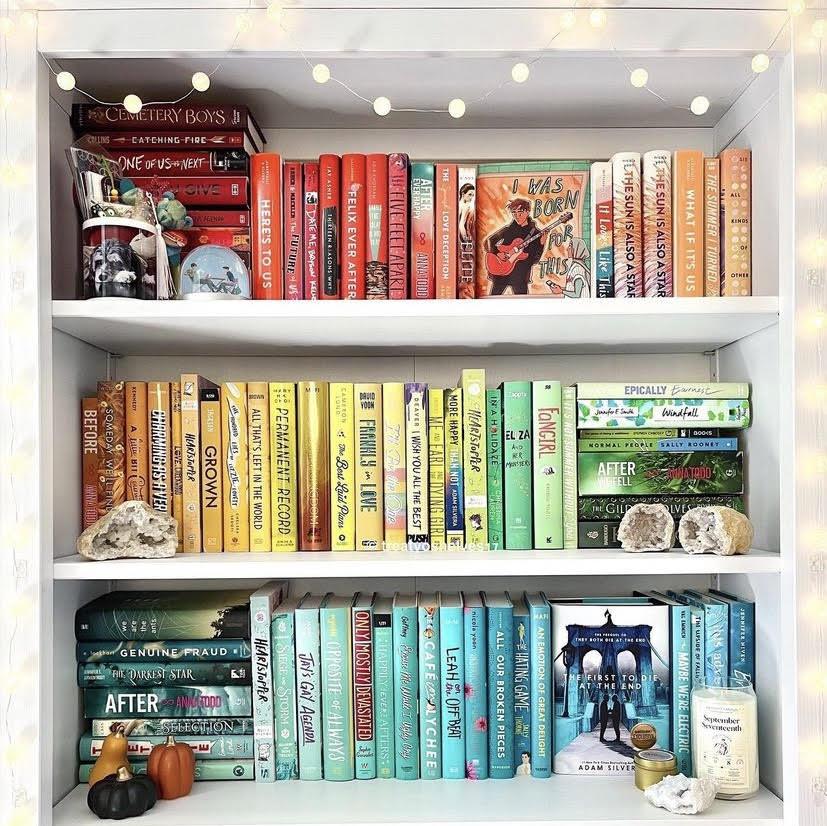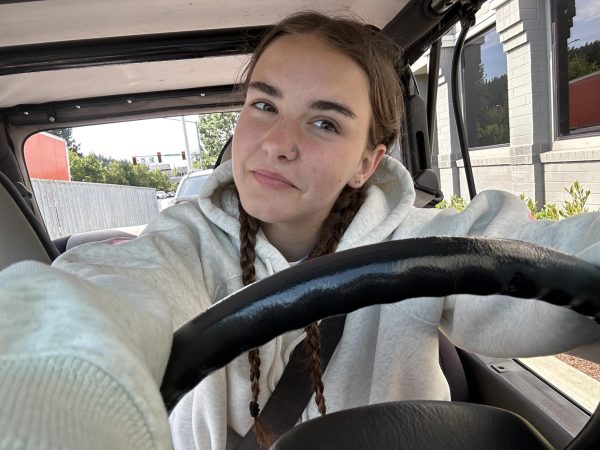
Did you know that in the 1800’s queer stories were already being written? Although they remained severely censored and quieted, queer people were set in ink long before many believe. While queer stories in the past have been rare and hard to find, recent queer stories have taken literature by storm making it a more inclusive, welcome, and open space for readers.
Queer stories have spread awareness about the many types of hardships and struggles queer people experience. As well as providing perspectives of the joy and happiness that queer people have when they are able to be loud and proud about themselves, these immense developments have made it possible for young people to learn and relate with queer characters.
Authors like Casey McQuiston and Adam Silvera have spent their careers highlighting queer people in their stories. Instead of having LGBTQ+ characters as only side plots or minor characters, like many authors, they feature queer people as the main focus. The reason why that is so important is to avoid the common tropes seen in media, where the only queer characters are not prominently featured, and relegated to being side characters.
In “One Last Stop” and “They Both Die At The End,” love stories bloom in unique environments and couples fall in love against all odds. These books in particular have received excellent reviews and reactions, because of the uniqueness in the writing style, locations, and the characters. With each story featuring an Asian-American or Latine main character, and the discovery of themselves and their partners throughout the stories.
An important thing to remember when reading queer literature is that all queer stories are different, because queer writers have different backrounds and lived experiences. I interviewed Jules Ohman, a queer writer who recently published a novel featuring queer characters called “Body Grammar.” “There is nothing that feels as good to me as connecting with a story that reflects some part of you back,” they went on to say. “People need to see themselves and their experiences reflected in literature in order to know that their lives can and should exist.”
Representation is not only important to learn about the lived experiences of others but also to affirm your own identity. Ohman says, “I hadn’t known what a void it was, how lonely it felt, until [she] actually experienced real representation.” Authors commonly create representation in their work that was not accessible to them in their own experience growing up. Ohman shared that writing their own stories brought the representations that she explained were “vital to me when I was questioning and in the closet, especially as a teenager. I read queer books long before I knew I was queer.”
Queer literature opens up ideas and feelings for every person that they have not experienced before. This is why the promotion of this genre is so important; if queer books are banned or censored, the positive impacts the genre has on youth will disappear. LGBTQ+ individuals and allies work as hard as possible in order to ensure that young people have access to these impactful works.
While no one can read or buy every book, if anyone has it would be Ayn Frazee, Franklin High School’s librarian. Throughout our conversation, we discussed the past, current, and future of the LGBTQ+ genre. When talking about the banning of LGBTQ+ works, Frazee believes that “It’s significantly more harmful to young people to remove their right to choose than to expose them to something that one person or group deems harmful based on ignorant beliefs.”
Later in our conversation, she stated that when non-queer people read queer works it helps “to build empathy and understanding of people who aren’t exactly like them.” Frazee went on to say that queer people reading queer works not only provides comfort or educates them, but it can also validate their experiencesand help them feel less lonely. While there have been many more advances in the diversity of queer literature, there is always room for improvement. “Until there is a book published that connects and resonates with every single queer reader, there will always be room for more representation,” Frazee explained before continuing, “Every voice is valuable, and every reader can benefit from reading diverse characters.”
While there are many sexualities that have yet to become a part of queer literature, the strides in development of this important topic and stories is radical. Trans stories have become more popular within the LGBTQ+ book genre, as well as asexuality, which has seen more representation in recent years. Although literature is advancing to adapt more queer stories, many still have yet to get the representation in media that they deserve.
“Loveless” by Alice Oseman takes this by storm, with the book taking on an AroAce coming out story, based on the author’s own experiences. They create a story where the main character, Georgia, learns and struggles through her identity. Ultimately, she learns the love she has for herself and her friends is something that is unrivaled by any romantic relationship.
When reading the reviews on the popular site GoodReads, almost every good review states that this book made them feel less alone. It also cemented that not having sexual or romantic attraction is normal; many wished they had this type of story when they were coming out and questioning. This shows just how important every queer book can be for people who never thought someone would get who they are.
As Frazee says “a library collection can never be too diverse,” along with Ohman stating “There’s enormous freedom and community in [queer stories].” These two queer literature enthusiasts believe in similar notions and hope regarding the future and promotion of the genre, as a librarian and an author. Frazee uses facts to encourage her hope such as, “More queer stories are being published and made widely available,” because readers constantly express that “this is what [the public] want[s] to read!” Whereas Ohman uses her personal experience to encourage young authors and readers with advice to “Please write your stories, and keep going! We need them. Write for each other, write for yourself.”
Queer stories are just a few representations of queer experience. They are meant to help and teach people about the LGBTQ+ community, but they may not be a representation of every person’s story. While some reading “Loveless” or “All Boys Aren’t Blue” may feel completely represented and seen, others may see flaws or tropes they disagree with.
Every person is different, and every queer person deserves the comfort that books and their characters can give them. This is why LGBTQ+ literature is so incredibly important; by having authors with diverse backgrounds we receive diverse perspectives. With the growth of queer main characters, stories, and relationships in literature and other media, more people can feel recognized and solidified in their identity and story.


































